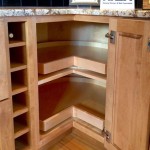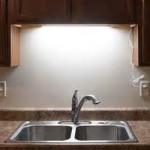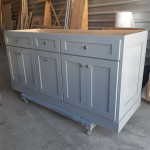Stainless Steel Kitchen Island Tops: A Comprehensive Guide
Stainless steel has long been a staple in professional kitchens for its durability and hygienic properties. Increasingly, homeowners are recognizing these benefits and incorporating stainless steel into their residential kitchens, particularly for island countertops. This guide explores the advantages, disadvantages, design considerations, installation process, and maintenance requirements of stainless steel kitchen island tops.
Advantages of Stainless Steel Island Tops
Durability is a primary advantage of stainless steel. It resists scratches, dents, and chips better than many other countertop materials, making it ideal for high-traffic areas like kitchen islands. Stainless steel is also heat-resistant, allowing hot pots and pans to be placed directly on the surface without fear of damage. Its non-porous nature makes it resistant to stains from spills like wine, oil, and acidic foods. Bacteria and other microorganisms cannot penetrate the surface, contributing to a more hygienic food preparation environment.
Disadvantages of Stainless Steel Island Tops
Despite its many advantages, stainless steel has some drawbacks. It can be prone to showing fingerprints and smudges, requiring frequent cleaning. While resistant to scratches, deeper gouges can occur with heavy impact. Some homeowners find the industrial aesthetic of stainless steel cold and impersonal, although this can be mitigated with appropriate design choices. Cost can also be a factor, as stainless steel tends to be more expensive than some other countertop materials like laminate.
Design Considerations for Stainless Steel Island Tops
Several factors influence the final look and functionality of a stainless steel island top. Thickness typically ranges from 14-gauge to 10-gauge, with lower gauge numbers indicating thicker, more durable steel. The finish of the stainless steel also plays a significant role in the overall aesthetic. Common finishes include brushed, polished, and matte. Brushed finishes offer a subtle sheen and hide scratches well. Polished finishes are highly reflective and create a more modern look. Matte finishes offer a subdued, non-reflective surface.
Edge profiles offer another opportunity for customization. Square edges provide a clean, contemporary look. Beveled edges soften the appearance and minimize sharp corners. Bullnose edges offer a rounded, traditional feel.
Integrating a stainless steel island top with other kitchen elements requires careful consideration. Pairing stainless steel with natural materials like wood and stone can create a balanced and visually appealing contrast. Consider the existing appliances, cabinetry, and flooring when selecting the finish and edge profile of the stainless steel to ensure a cohesive design.
Installation of Stainless Steel Island Tops
Professional installation is generally recommended for stainless steel island tops due to the specialized tools and expertise required. The process typically involves precise measurements and fabrication of the countertop to fit the island's dimensions. Undermount sinks require precise cutouts in the stainless steel, which are best performed by experienced fabricators. Proper sealing around the edges and sink prevents water damage and ensures a hygienic surface.
Maintenance of Stainless Steel Island Tops
Regular cleaning is essential to maintain the appearance and hygiene of a stainless steel island top. Daily wiping with a mild dish soap and warm water is usually sufficient for routine cleaning. For more stubborn stains or fingerprints, specialized stainless steel cleaners are available. Avoid abrasive cleaners or scouring pads, as these can scratch the surface. Regularly applying a stainless steel polish helps to protect the surface and maintain its shine.
Choosing the Right Stainless Steel Island Top
Selecting the right stainless steel island top involves careful consideration of budget, design preferences, and practical needs. Assessing the frequency of use and the types of activities performed on the island will help determine the appropriate thickness and finish. Consulting with a kitchen designer or experienced fabricator can provide valuable insights and guidance during the selection process. Obtaining samples of different finishes and edge profiles allows for a more informed decision.
Integrating Sinks and Cooktops
Stainless steel's versatility extends to the integration of sinks and cooktops directly into the island top. Undermount sinks create a seamless transition between the countertop and sink, enhancing both aesthetics and hygiene. Integrated cooktops further streamline the workspace and provide a cohesive look. These integrated features require precise planning and professional installation to ensure proper functionality and a watertight seal.
Long-Term Value of Stainless Steel Island Tops
While the initial investment in a stainless steel island top may be higher than some other materials, its durability and longevity contribute to significant long-term value. With proper care and maintenance, a stainless steel island top can last for decades, providing a hygienic and aesthetically pleasing workspace. Its resistance to wear and tear minimizes the need for repairs or replacements, making it a cost-effective choice over the long term.

Custom Stainless Steel Countertops Island Tops

Custom Stainless Steel Countertops Island Tops

Custom Stainless Steel Countertops Island Tops

Custom Stainless Steel Island Countertop With Top Mount Sink

Made To Measure Stainless Steel Kitchen Worktops

Julia Stainless Steel Top Kitchen Island Crosley Furniture

Custom Stainless Kitchen Islands Steel Island

Stainless Steel Countertops

Crosley Furniture Julia Stainless Steel Metal Top Kitchen Island In White

Stainless Steel Kitchen Island
See Also








